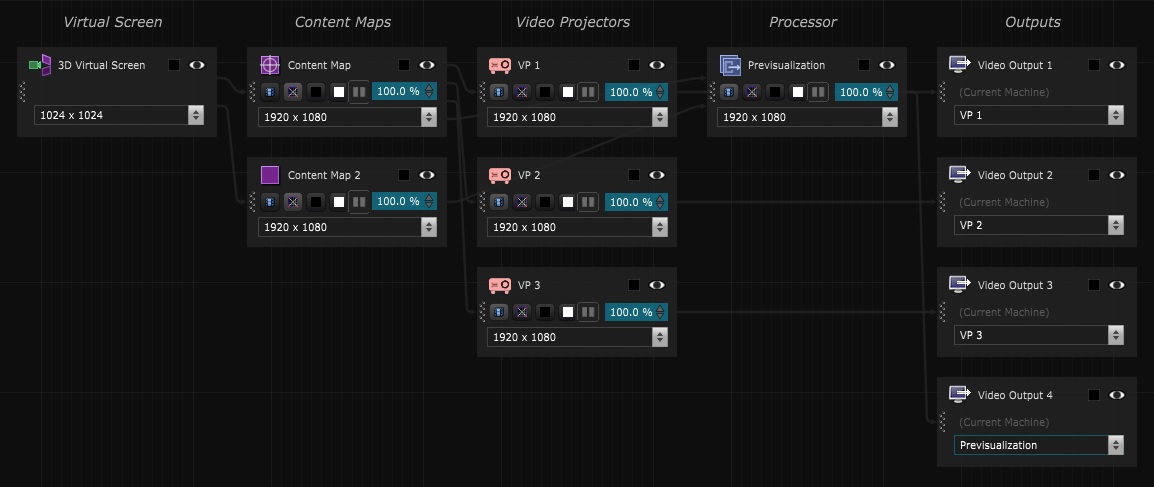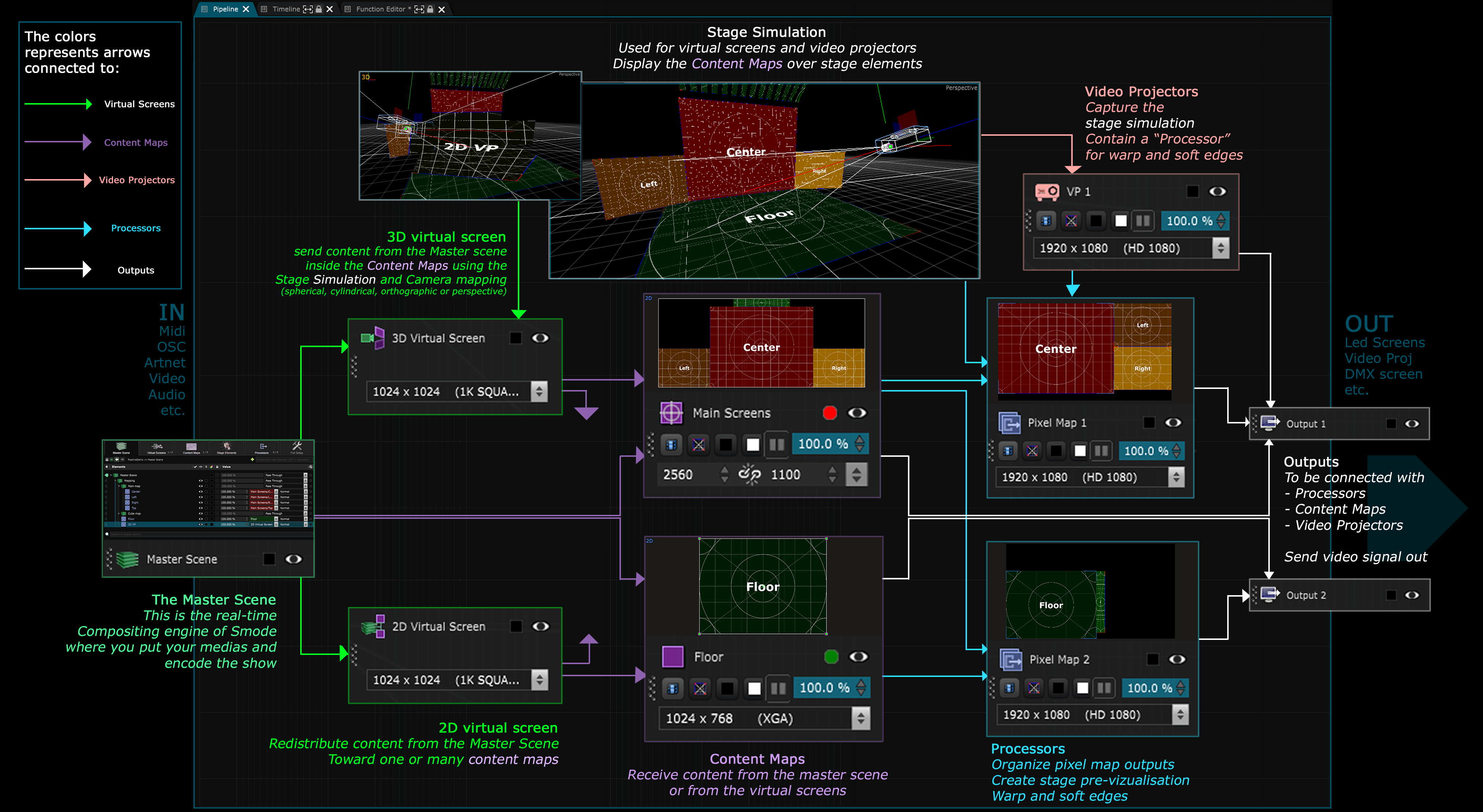Pipeline
Defines how video content is processed in a project
The pipeline defines how video content flows and is processed from the Show till the video outputs of Smode.
Learn more about how to use the Pipeine by reading: Pipeline Introduction .
Pipeline columns
Here is a picture of a typical pipeline :
-
Content Mapping : Logical targets for content (Optional)
-
Content Map : Rasterized targets for content
-
Video Projector : Processors of the Video projector in the Stage (Optional)
-
Processor : Additional 2D or pre-visualization processors (Optional)
-
Video Output : The actual Video Output Device
Simplest Pipeline
The simplest pipeline is made of one Content Map connected to a Video Output .
Full Pipeline
Here is a little schematic to help you understand the whole mapping process:
-
Scene rendering in content maps: The content is defined in the Show , in which 2D Layer are sent either to Content Mapping or to Content Map (or Content Area ).
This rendering process is equivalent to making one Compo per Content Map . -
Processors to define post-processings: As many Processor as wanted can be created to define how to post-process the video content.
-
Binding to video outputs: The last step of the pipeline is to bind the Video Output Device to either Processor or to Content Map directly.
Pipeline link with Stage
The pipeline is tightly linked to the Stage , which is the 3D modeling of the actual stage with screens, surfaces, video projectors and cameras.
Here are some example of connections between the pipeline and the stage:
-
The content of stage Surface and Led Screen is defined by Content Map
-
Video Projector Processor are relative to the Video Projector in the stage
-
Content Mapping refer to 3D cameras that are defined in the Stage
3D video mapping
Here is the principle of the 3D video mapping pipeline:
-
First, the video content of the Content Map is mapped to the projection
Surface according to how they are defined in the Stage . -
Then, each Video Projector will act as a camera in 3D space that sees the surfaces with associated mapped content.
This automatically computes the correct 3D deformation to achieve video mapping. -
Blending and warping is defined inside the video projector Processor .
-
Most oftenly, the video projector processor will be selected on one of the Video Output , but
if it’s needed to pack the signal differently (e.g. multiple video projectors on a single large output), it’s possible to create
custom Processor to assemble multiple projectors in once. The same technique can also be used for example to
convert a 16/10 signal into 16/9 or the other way around.
Content Mapping
Automatize complex dispatch of content from the Show toward Content Map
Content Map
This section describes how to set up your content maps and use Content Area
Processor
What is a processor used for: to configure your output(s) or make some nice and smooth stage pre-visualisations
Video Output
Represents the connection of a Video Output Device to the Pipeline
Modifier Stack
Apply every 2D modifiers placed in a Modifier Stack Layer
Topology
Contains all the SmodeServer












